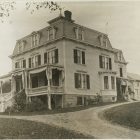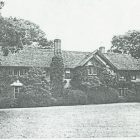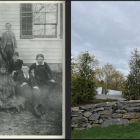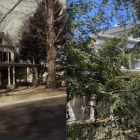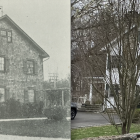Footer Featured Widget
New Canaan Now & Then: The Mulliken Property [Part 1 of 2]
|
‘New Canaan Now & Then’ is sponsored by Brown Harris Stevens Realtors Joanne Santulli, Karen Ceraso, Bettina Hegel and Schuyler Morris. In the early part of the century, Alfred H. Mulliken, a millionaire summer resident from Chicago, started purchasing tracts of land in the Oenoke area with the long term goal of creating a gated enclave similar to Tuxedo Park.
Mulliken was born in Augusta, Maine in 1854. At the age of 15, he went to Chicago to seek his fortune, beginning his career as an office boy and eventually being offered a partnership in a company that supplied railroad equipment.
Mulliken started his own firm with a Chicago banker, Asa C. Pettibone. When the success of his company required him to open a New York office, Mulliken began summering in New Canaan with his invalid wife and 15-year-old son. The Mulliken family rented the John B. Gerrish house off of Oenoke until it caught fire and then rented a second house across the way owned by Dr. Lambert which also caught fire.
